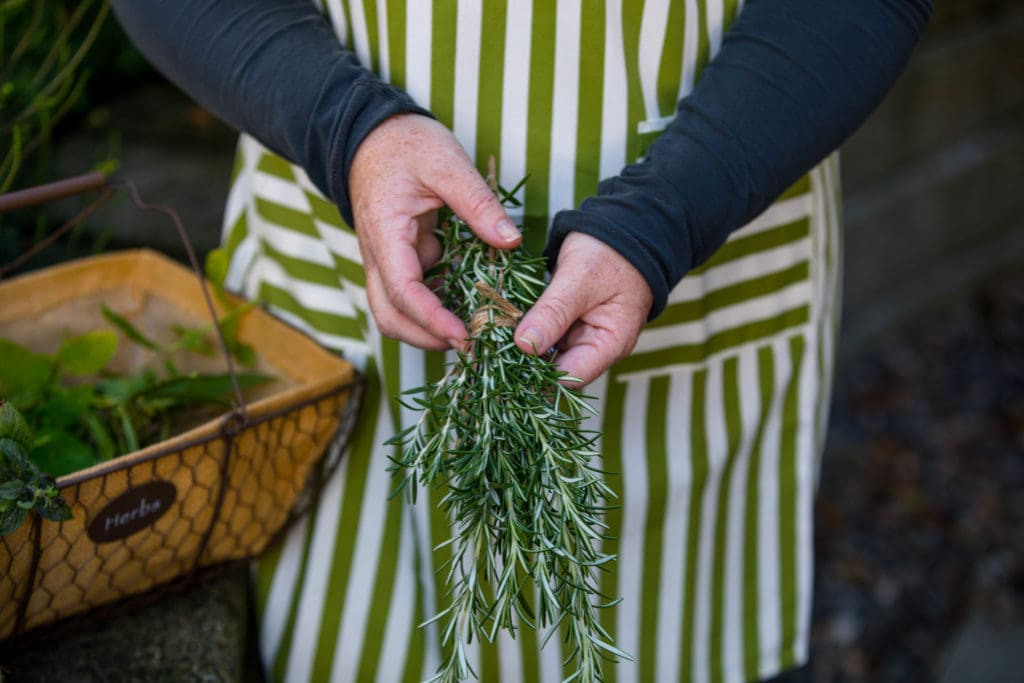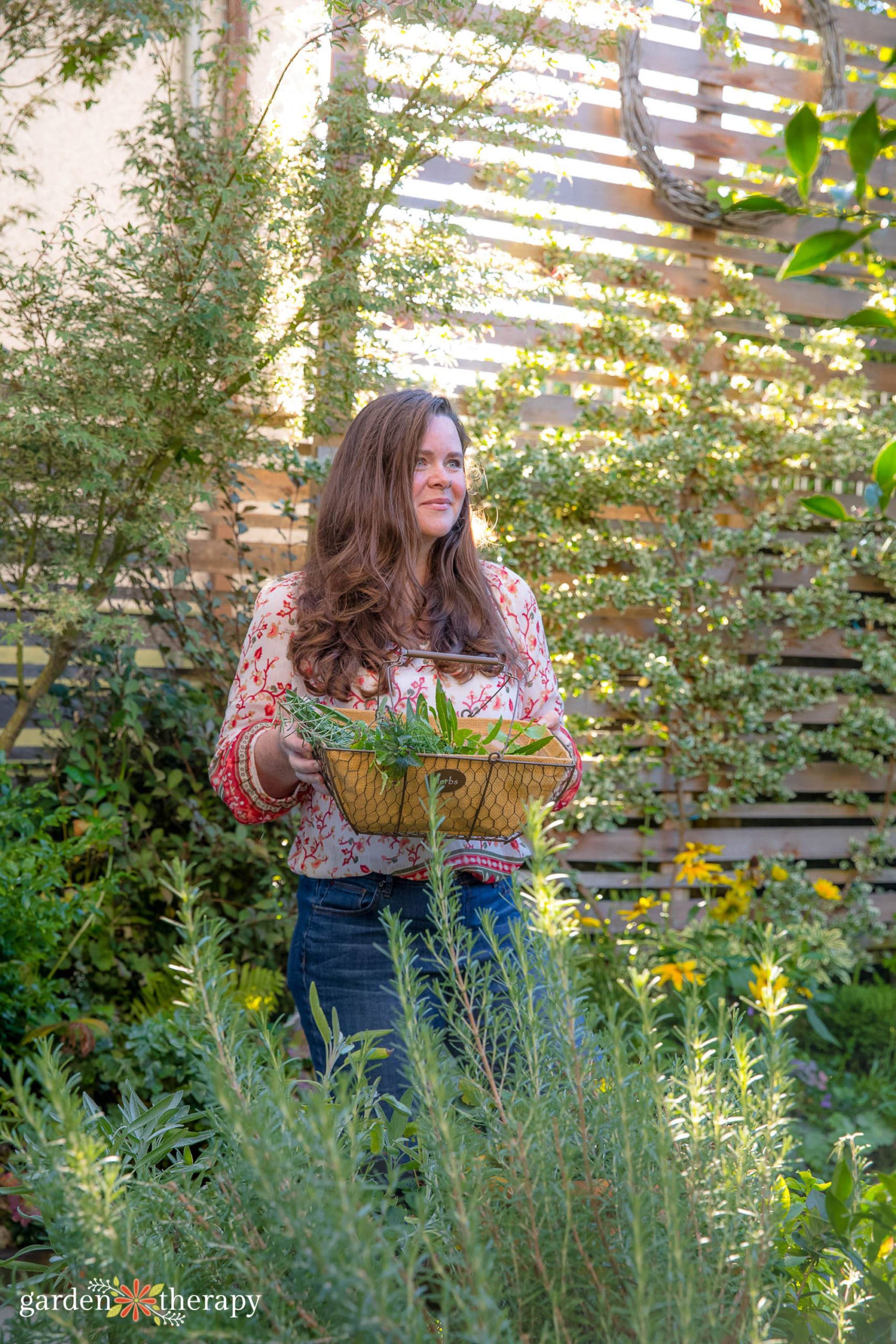At this year’s BC Home + Garden Show, returning to BC Place Stadium from March 10 to 13, award-winning Vancouver-based author and gardening expert Stephanie Rose will be sharing her knowledge on the Vancouver Sun Gardener’s School Stage. A lot of people don’t know that not only what we eat affects our health, but also the products we use on our skin. Stephanie will be teaching showgoers what herbs and flowers they are already growing in their gardens that contain skin-healing properties, and which ones they should be planting this year. We chatted with Stephanie ahead of the show, to get some advance insights! —Noa Nichol

Hi Stephanie! Tell us a bit about yourself to start
I’m a Vancouver-based author of 11 published books, including The Regenerative Garden (set to release on March 22), that help folks use the gifts of nature to grow a better garden and life. Through my books and website, I share inspiring stories, recipes, and DIY projects to tempt everyone into the garden no matter their ability, garden size or budget. This passion comes from a very honest place. In 2006, I experienced the onset of a debilitating illness, which I still struggle with to this day. I found joy and healing through gardening so I dug deeper and became a certified permaculture designer and herbalist, natural skincare formulator, wellness advocate and volunteer master gardener so I could share the message of Garden Therapy with others. My heart is dedicated to creating ecosystems in the home and garden, allowing the natural powers of plants to touch everything from the way we design our yards to how we create natural beauty products for our skin. Plants are wonderful teachers and healers, we just have to spend some time learning from them.
At this year’s BC Home + Garden Show, you’ll be sharing your knowledge on the Vancouver Sun Gardener’s School Stage. That said, a lot of people don’t know that not only what we eat affects our health, but also the products we use on our skin. What herbs and flowers contain skin-healing properties?
When I first started making my own natural skin care 18 years ago, two things surprised me. First, homemade natural skincare is so easy to make. Based on the unpronounceable lists of ingredients in most synthetic skincare, I thought one would need to have a PhD in chemistry to make soap or lotion. As it turns out, it often takes a few common ingredients from your kitchen and basic cooking skills. Second, many common plants we have growing in our gardens already have wonderful healing properties for the skin. By infusing natural oils with common herbs, we extract the properties and can make skincare products that work in harmony with our skin. After all, we are part of nature as well. It makes sense that skincare from natural plant sources work so well on our bodies just as we see benefit from feeding our bodies with foods close to nature. Here are f common herbs that are a great place to start with when creating a garden for skin care:
English Lavender (Lavendula angustifolia): lavender has antiseptic properties and it’s gentle on skin but tough on bacteria and fungus making it a perfect addition to most skincare products you make at home.
Calendula, Pot Marigold (Calendula officinalis): Calendula has long been used to heal minor cuts and scrapes. Its anti-inflammatory and skin-regenerating properties make it an ideal addition to healing salves, balms and lotions.
Rose (Rosa spp.): Rose has natural anti-inflammatory, antibacterial, and astringent properties, plus it is full of natural oils and vitamin C, which hydrate and replenish dull, dry skin.
Rosemary (Rosmarinus officinalis): Rosemary cleans, deodorizes and wakes you up. I often use rosemary as an effective natural deodorizer, and it is one of the top herbs for hair care.
Mint varieties (Mentha spp.): Mint has anti-inflammatory properties that can help soothe dry or irritated skin, and its refreshing scent helps wake you up and invigorate you. It is also a popular pain reliever, especially to help cool down inflamed and achy feet.
If we wish to plant these in our gardens this year, what is the ideal timing and conditions around some of them?
You probably have some of these growing in your garden already! Most of the herbs that have skincare properties are very common to gardens. Perennials and shrubs like peony, rose, rosemary, lavender, mint and sage can be planted in the garden safely after Victoria Day and after a season of growing they should be strong enough to naturalize in place for many years to come. Annuals like calendula, chamomile and hops can be started from seed in the winter, either indoors in seed trays or by direct sowing in the garden. Have a look at the seed packets for timing and instructions for each variety. Even more exciting is that you will likely have some weeds growing in your garden that you can use for skincare. Wild plants like dandelion and lemon balm have lovely skincare properties and require no planting at all.
In terms of harvesting and prepping plants from the garden for the most common skincare products, including lip balm and body lotion, what are some of your top tips?
Harvest flowers or leaves in the morning, before the heat of the day. Look for flowers that have just recently bloomed, except in the case of lavender where you harvest the flowers when the buds turn purple but have not opened to retain the most fragrance and colour. Then, the plants are either dried by hanging bundles of stems upside down or spreading the leaves and flowers on a drying screen. Make sure you dry the herbs in a cool location away from direct sunlight. When they are completely dry, store them in sealed glass jars, preferably in a cabinet to keep them away from sunlight. Dried flower petals and herbs can be added into epsom salts as a herbal bath tea or infused in oils to make soap and lotion.
Could you share a simple DIY recipe so that we can get started?
I have so many simple recipes for skincare on my website, including recipes for Calendula Lotion Bars, Rose Water and Peony Bath Salts. These three are varied and teach a few different methods, as well as use some wonderful skincare herbs.

Be the first to comment